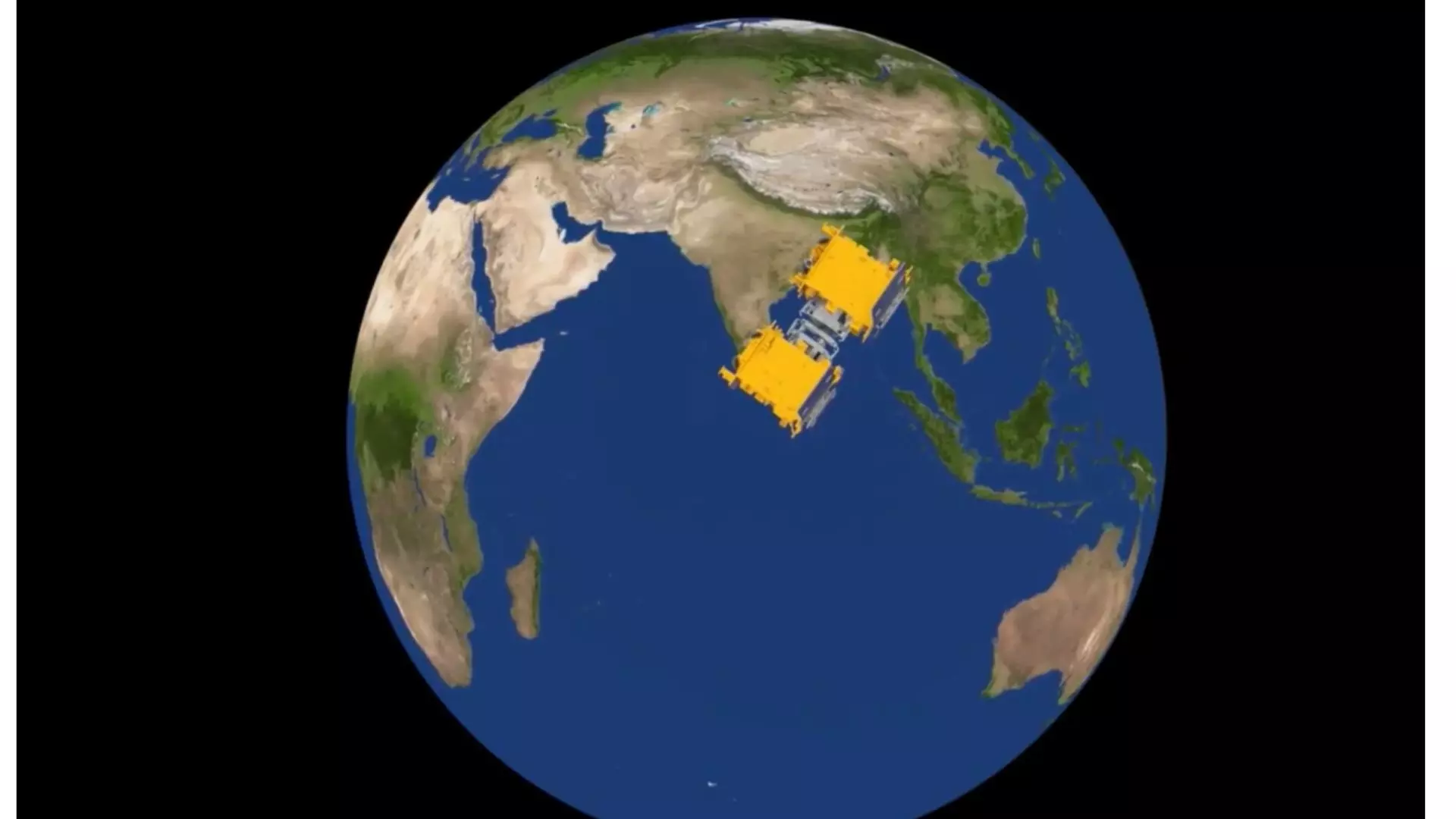Precision in Space: India achieves historic space docking milestone
ISRO's SpaDeX docking experiment marks a milestone, advancing India’s space station goals and lunar missions

Tirupati: India broke through into a select club of the US, Russia and China when the Indian Space Research Organisation docked two satellites in space, achieving mastery in the critical technology needed for setting up of the Bharatiya Antariksh Station, among others, early on Thursday.
The SpaDeX (space docking experiment) involved the docking of two satellites, Chaser and Target, that were launched into space aboard the PSLV C60 on December 30, 2024.
The androgynous docking mechanism on the satellites uses two motors, unlike the 24 used in international standards.
“Docking Success! Spacecraft docking successfully completed! A historic moment,” Isro proclaimed on its X handle, after the SpaDeX was completed.
Shortly afterwards, Prime Minister Narendra Modi led the nation in congratulating Isro for the feat. “It is a significant stepping stone for India's ambitious space missions in the years to come,” Modi said in a post on X.
Isro confirmed that post-docking, control of the two satellites as a single object has been achieved. Isro plans to showcase power-sharing between the satellites soon.
The docking was monitored and executed by Isro scientists at the Mission Operations Complex (MOX) of the ISRO Telemetry, Tracking, and Command Network (ISTRAC), Bengaluru.
In the coming days, the agency will carry out undocking and power transfer checks to validate the system further. The two satellites will remain in space for two years, separately conducting experiments.
The agency outlined the precise steps of the docking process, which included manoeuvring from a 15-metre hold point to 3 metres, initiating docking, completing retraction smoothly, and achieving rigidisation for stability.
The SpaDeX required precise manoeuvres to bring the two satellites together: Chaser and Target were gradually positioned at various distances: 5 km, 1.5 km, 500 m, 225 m, 15 m, and finally 3 m. At this point, their docking rings were joined, retracted, and locked securely.
Isro stated that this mission demonstrated crucial technologies for future space applications, including autonomous docking.
SpaDeX, scheduled for January 7, was postponed after an abort scenario was identified. On January 8, Isro delayed the test after detecting an unexpected drift between the satellites. The drift was corrected, and additional simulations were conducted to ensure the accuracy of the docking process.
On January 12, the satellites reached the 3-metre hold point, setting the stage for the historic docking. Isro emphasised the complexity of this operation, which involved new sensors like the laser range finder, rendezvous sensor, and proximity and docking sensor.
A new processor based on satellite navigation systems also played a critical role in determining the relative position and velocity of the spacecraft.
Docking in space is a critical technology for space missions. It enables the assembly of large spacecraft in orbit, which is essential for building space stations and conducting lunar sample-return missions. The docking mechanism used in SpaDeX is androgynous, meaning both satellites have identical systems, simplifying the process.
While similar to the International Docking System Standard (IDSS) used globally, India’s mechanism uses only two motors compared to the IDSS’s 24, demonstrating technological innovation.
This capability is vital for Isro’s ambitious goals, including the establishment of the Bhartiya Antriksh Station by 2035. This modular space station will be assembled in orbit with the first module planned for launch in 2028. Docking will also be a cornerstone of the Chandrayaan-4 mission, which aims to return lunar samples to Earth.
ISRO plans to develop a new heavy-lift launch vehicle capable of carrying 30 tonnes to low-Earth orbit (LEO) to support its space station ambitions. The Chandrayaan-4 mission will feature five key modules launched in two stages, with docking playing a crucial role in transferring lunar samples back to Earth.
Satellites Involved: SDX01 (Chaser) and SDX02 (Target), launched on December 30, 2024, aboard PSLV C60.
Execution: Docking was executed at the Mission Operations Complex (MOX) of ISTRAC, Bengaluru.
Docking Process: The satellites were progressively manoeuvred to distances of 5 km, 1.5 km, 500 m, 225 m, 15 m, and 3 m.
Docking rings were joined, retracted, and locked to form a single composite object.
Laser range finder, rendezvous sensor, and proximity and docking sensors ensured precise measurements.
After the docking
Isro demonstrated commanding the satellites as a single object.
Power-sharing between satellites will be tested, followed by undocking and separation.
Satellites will carry out payload missions for up to two years after separation.
Challenges and Delays:
Originally scheduled for January 7, the docking was postponed due to an abort scenario during simulations.
On January 8, the experiment was further delayed due to unexpected satellite drift, which was later corrected.
Significance of SpaDeX:
Enables the assembly of large spacecraft and space stations in orbit.
Critical for Isro’s goals, including setting up the Bharatiya Antariksh Station by 2035 and lunar sample-return missions like Chandrayaan-4.
Future Missions:
Bhartiya Antriksh Station will involve assembling five robotic modules in orbit, with the first module launch slated for 2028.
Chandrayaan-4 will demonstrate docking for lunar sample return, involving multi-module spacecraft in two launches.
Technological Innovation:
India’s androgynous docking mechanism uses two motors, unlike the 24 used in international standards.
SpaDeX lays the foundation for autonomous docking systems for future missions.

